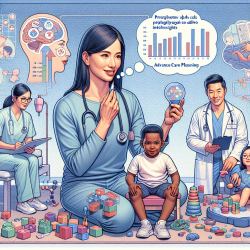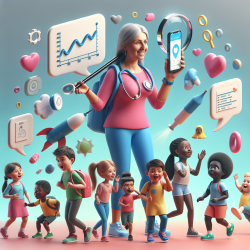Introduction
In today's digital age, the volume of healthcare data is expanding at an unprecedented rate. This explosion of information, often referred to as Big Healthcare Data (BHD), presents both challenges and opportunities for professionals in the field of speech language pathology. By effectively managing and interpreting this data, practitioners can make data-driven decisions that significantly improve outcomes for children. This blog delves into the insights from the research article "Methodological challenges and analytic opportunities for modeling and interpreting Big Healthcare Data" by Ivo D. Dinov, and explores how these insights can be applied to enhance clinical practices.
Understanding the Challenges
Big Healthcare Data is characterized by its large size, disparate sources, and complex nature. The lack of a universal protocol for modeling and analyzing such data complicates the task of drawing meaningful conclusions. Practitioners face the daunting task of processing heterogeneous datasets that include structured and unstructured data, such as clinical notes, imaging, and genetic information.
Despite these challenges, the potential benefits of harnessing BHD are immense. The key lies in developing innovative scientific techniques, predictive models, and analytics that can uncover patterns, trends, and associations within the data.
Opportunities for Practitioners
For speech language pathologists, the integration of big data analytics into practice can lead to more personalized and effective interventions for children. Here are some actionable steps practitioners can take:
- Embrace Cloud Services: Utilize distributed cloud services to process and analyze large datasets efficiently. This can enhance the ability to deliver remote therapy services, such as those provided by TinyEYE, and ensure that interventions are based on the most current and comprehensive data available.
- Adopt Predictive Models: Implement predictive analytics to anticipate and address potential challenges in therapy. By understanding patterns in data, practitioners can tailor interventions to meet the specific needs of each child, improving the likelihood of successful outcomes.
- Engage in Continuous Learning: Stay informed about the latest advancements in data analytics and machine learning. This knowledge can empower practitioners to apply cutting-edge techniques to their practice, ensuring that they remain at the forefront of the field.
Encouraging Further Research
While the current methodologies offer a solid foundation, there is still a need for ongoing research and development to fully realize the potential of BHD in speech language pathology. Practitioners are encouraged to collaborate with data scientists and researchers to explore new ways of integrating big data into clinical practice. This collaboration can lead to the development of more sophisticated models and tools that can further enhance therapeutic outcomes.
Conclusion
The integration of big healthcare data into speech language pathology holds the promise of transforming the way practitioners deliver care to children. By overcoming the challenges associated with BHD and leveraging its opportunities, practitioners can make data-driven decisions that lead to better outcomes. As we continue to advance in this field, the hallmark of success will be a collaborative approach that combines the expertise of clinicians, data scientists, and researchers.
To read the original research paper, please follow this link: Methodological challenges and analytic opportunities for modeling and interpreting Big Healthcare Data.










